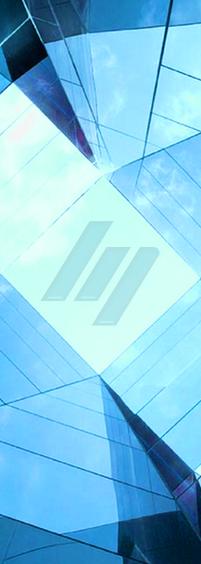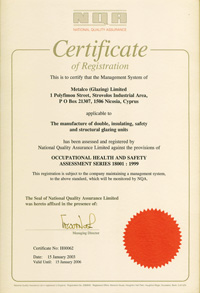
in single panes or double glazing
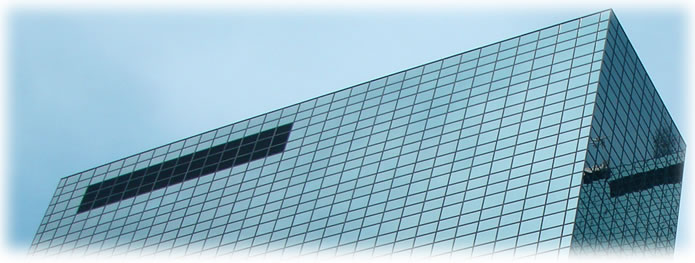
Description
This technique can be used to create an "all-glass" façade in which the actual structure is hidden behind the glass. Glazing in which the silicone seal is designed to transfer the stresses and to be resistant to UV radiation since there is no rebate on the edges. The structural glazing façade technique can be used with single panes of glass, coated or non-coated double glazing enamelled glass, etc.
Benefits
 Structural glazing can be used to create all-glass façades.
Due to its design, structural glazing also provides:
Structural glazing can be used to create all-glass façades.
Due to its design, structural glazing also provides:
- a good level of waterproofing
- excellent sound insulation
- an easy-to-clean surface
- protection for the load-bearing structure
Principle of a Structural Glazing Facade
Glazings (single panes or insulating glazing) will generally be factory- bonded on a metal frame. The glass and frame unit is then transported to the site and fixed to the load-bearing structure.
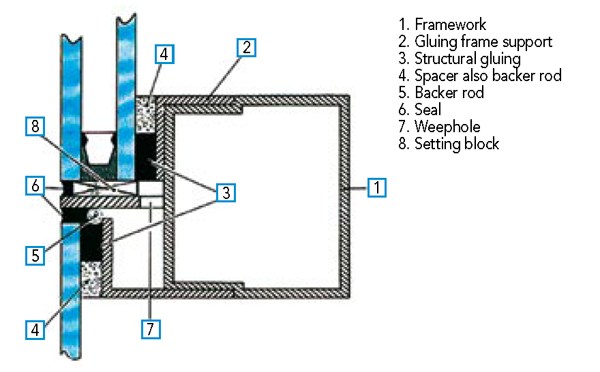
Structural Glazing Façade schema
Description of Structural Glazing
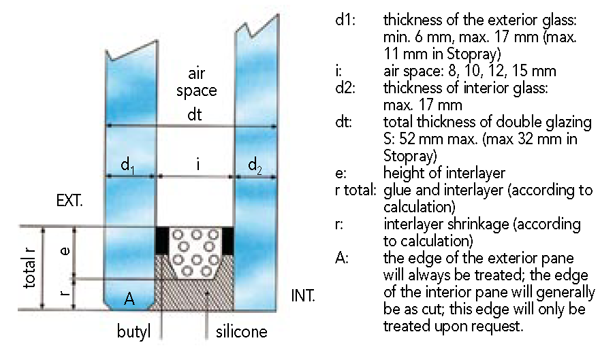
Structural Glazing schema
Glass Components
We generally recommend using glasses at least 6 mm thick. The glasses used are either single or double glazing in which at least one edge remains visible and exposed to radiation. For this reason, the seal must be made of silicone.
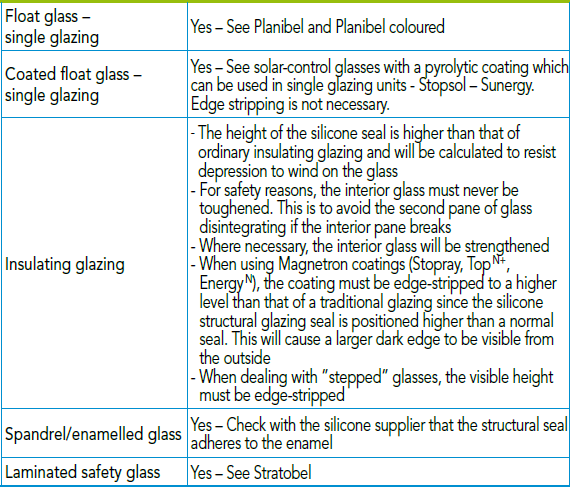
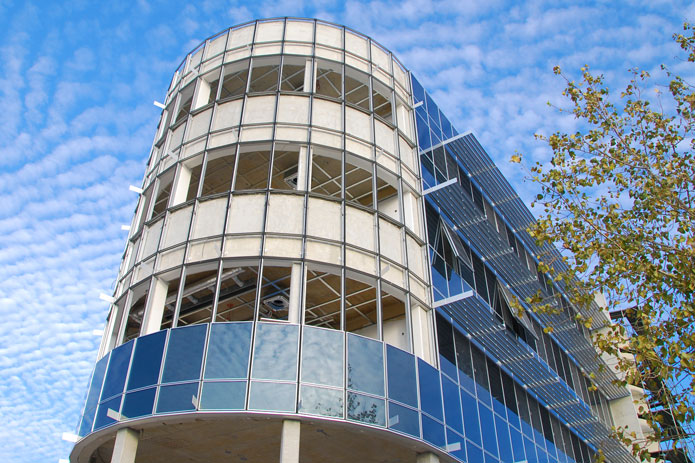
Example of Structural Glazing (Ioannou Building)
